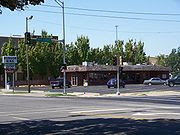 As reported in numerous publications, U.S. population trends will favor the apartment industry over the next couple of decades.
As reported in numerous publications, U.S. population trends will favor the apartment industry over the next couple of decades.Not only is renting becoming an economic choice, but also a lifestyle choice.
Apartment living is considered by many to be the solution to a possible future housing crisis. Currently the U.S. home ownership rate stands at 67.5%, however it is more than a remote possibility that it could decline 6% to 8% over the next decade. For every single percentage point of declining home ownership, there will be created a potential demand for approximately one million rental units.
Prior to the Baby Boomer generation of buyers home ownership remained below 60%.
During the 3rd quarter of 2008 the number of renters who moved out in order to purchase their own homes were down almost 15% from a high in 2004. In 2009 less than 14% of renters left to buy homes and that number is expected to decline even further.
This year some 40.2 million Americans will be 65 or older. Furthermore, it is estimated that in 10 years, the number of senior U.S. residents will increase to 54.8 million. 72.1 million will have reached the age of 65 by year 2030 and 86.7 million by 2050.
The population group of 85 and above is projected to more than double, from 4.7 million in 2003 to 9.6 million in 2030. As life expectancy increases and with more accessible health care services and medical advances, new demands for senior housing will be created.
There is an increase in the likelihood of renting as the senior population grows older. Rental units simply fit the aging population better.
In 2000, there were 35.3 million Hispanics in the U.S. This ethnic group’s population is expected to increase to 49.7 million by 2010 and to 66.4 million by 2020. 54% of the U.S. population growth between 2000 and 2030 will be Hispanic. It is estimated that an additional 12 million Hispanics illegal residents. According to a recent Pew Research Center study, 36% of Hispanics fear that they may lose their homes to foreclosure.
It is estimated that 54% of Hispanics rent today and that number will increase.
Gen Y finds renting appealing and, at almost 85 million, the overall Generation Y population is larger today than the Baby Boomers. Many of them are at or close to the ages when they become renters. Generation Y prefers urban living to suburban living and do not have enough savings or income to buy a home.
Generation Y tends to put personal and professional development ahead of marriage.
It is a continuing and growing trend for those with college degrees to postpone marriage until they are more ready. Balancing work and personal life is very important and they are willing to pay more for housing in order to avoid time consuming commutes.
Today 57% of those under age 34 rent.
In conclusion, the future of apartment living is bright.













